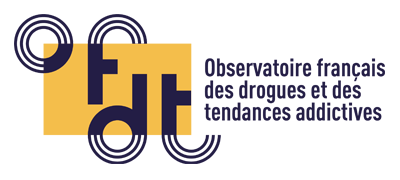TREND
Emerging trends and New Drugs
The aim of the TREND scheme, which was established in 1999, is to provide information about illegal drug use and users, and on emerging phenomena. Emerging phenomena refer either to new phenomena or to existing phenomena that have not yet been detected by other observation systems.
TREND relies on a network of eight local coordinating sites (Bordeaux, Lille, Lyon , Marseille, Metz, Paris, Rennes, Toulouse) with a common information collection and analysis strategy. The data collection tools used are mainly qualitative: continuous ethnographic observations conducted in urban areas and on the party scene, questionnaires are administered to structures or associations in contact with drug users, focus groups (“health”, “law enforcement”) that aim to rapidly establish overviews of the situation with professionals in the field.
TREND also relies on:
- SINTES (National Detection System of Drugs and Toxic Substances), an observation system geared towards detecting and analysing the composition of illegal substances on the national territory;
- the monitoring of virtual spaces and NPS;
- recurrent quantitative surveys, such as the ENa-CAARUD survey among drug users seen in French low-threshold structures certified as CAARUDs;
- information systems supervised by the CEIPs (Centres for evaluation and information on pharmacodependence) and the ANSM (National Agency for Medicines and Health Products Safety), the OCRTIS (Central office for the repression of drug-related offences) and the INPS (National forensic science institute) and finally, other OFDT surveys.
While these investigations reflect realities from the field that are mainly confined to metropolitan areas, the TREND scheme also carries out investigations that analyse changes in use in various contexts (rural areas, counties overseas, working-class areas, etc.), thanks in particular to the financial support from the Île-de-France, Auvergne-Rhônes-Alpes and Indian Ocean regional health agencies (ARS) and as of 2019, the Provence-Alpes-Côte d’Azur and Hauts-de-France ARS.
Results
Psychoactive substances, users and markets: recent trends (2016-2017)
Tendances N° 129, December 2018
Psychoactive substances, users and markets: recent trends (2016-2017)
Tendances N° 121, December 2017
Psychoactive substances, users and markets: recent trends (2015-2016)
Tendances N° 115, December 2016
Psychoactive substance use in France: recent trends (2014-2015)
Tendances N° 106, December 2015
Illegal or misused substances: recent trends (2013-2014)
Tendances N° 96, December 2014
Use of Ketamine in France: recent trends (2012-2013)
Brief, June 2014
Markets, products, users: recent trends (2011-2012)
Tendances N° 86, July 2013
Noteworthy phenomena and emerging trends in illegal drugs (2010-2011)
Tendances N° 78, February 2012
Illegal Drugs: the 2009 observations of the TREND system
Tendances N° 73, December 2010
The eight national report from the TREND system
Tendances N° 58, February 2008
Cocaine small-scale dealing in France
Tendances N° 53, April 2007
The seventh national report on the TREND system
Tendances N° 52, December 2006
Recent trends and new drugs in France - The results of the sixth national report on the TREND system : subject-based operations 2000-2004 and principal observations 2004
Tendances N° 45, December 2005
Recent trends and new drugs in France in 2002 - Results of the fourth national report
Tendances N° 31, July 2003
Emerging phenomena linked to the use of drugs in France in 2001
Tendances N° 23, July 2002
Emerging phenomena linked to drug use
Tendances N° 15, July 2001
Drugs in Europe
![]() 2023 EMCDDA European Drug Report
2023 EMCDDA European Drug Report
The European Drug Report 2023: Trends and Developments presents the EMCDDA’s latest analysis of the drug situation in Europe. Focusing on illicit drug use, related harms and drug supply, the report contains a comprehensive set of national data across these themes and key harm-reduction interventions. This report is based on information provided to the EMCDDA by the EU Member States, the candidate country Türkiye, and Norway, in an annual reporting process.
The annual Statistical Bulletin contains the most recent available data on the drug situation in Europe provided by the Member States. These datasets underpin the analysis presented in the European Drug Report. All data may be viewed interactively on screen and downloaded in Excel format.
![]() The European Union and the drug phenomenon
The European Union and the drug phenomenon
 The European Union & the drug phenomenon : Frequently asked questions, joint publication between the EMCDDA and the European Commission, october 2010, 12 p.
The European Union & the drug phenomenon : Frequently asked questions, joint publication between the EMCDDA and the European Commission, october 2010, 12 p.



